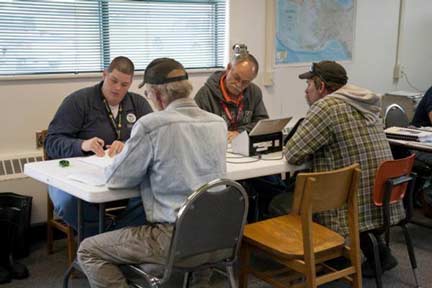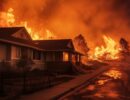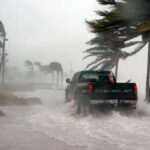This guide will teach you how to file a disaster insurance claim, a way to get financial assistance from your insurance company after a disaster. Learn about the different steps involved in filing a disaster insurance claim, what documentation you need to file a claim, and how to track the status of your claim.
If your property has been destroyed by a natural disaster, don’t wait to contact your insurance company. When a disaster strikes an area, insurance companies become buried in claims—acting quickly can help keep yours in priority position and may be useful in getting you immediate aide. But don’t file before you’re ready! The last thing you need is to have major delays because of incomplete or inaccurate information.
Filing a Disaster Claim, Step by Step
When filing a policy claim after a natural disaster, you should be fully prepared with the following:
1) Survey your property and make a list of all damage. Do not move any item, but take an inventory of damaged goods. Try to include when you purchased an item, the manufacturer’s name, the serial number, the place of purchase, the date of purchase, and the price.
2) Take photographs immediately of all damage, inside and outside, including any standing water, as conditions may change by the time an inspector arrives.
3) Do not throw out any damaged property unless it is a health hazard. If you must throw something out, take a picture of it before you do so and try to keep a sample.
4) Assess your immediate needs, like covering doors, windows, and other exposed areas, and pumping out water. Protect your home from further damage, but do not make any extensive or permanent repairs. Instead, wait until the damage has been properly assessed. Also be prudent with expenditures because only reasonable temporary repairs will be part of the total settlement. And never consider a contractor who wants a large payment up front; at the same time, beware of low estimates because the work may end up being shoddy.
5) Stay on top of your claim. After contacting your insurance company, expect a visit from an insurance adjuster within a couple of days or possibly longer depending on the magnitude of the disaster. If an adjuster has not contacted you to set up a visit within three days, call the insurance company back.
6) Have your documents, notes, and photographs ready when the adjuster visits—this is the time your damage will be officially assessed. This will speed the process of getting a detailed estimate of your property damage. You should both come to an agreement about the scope of damage and what needs to be repaired or replaced. Also let the adjuster know if you need an advance or partial payment for your loss. And be aware that many insurers include inspections of your electrical system, so make sure to inquire.
7) Keep good notes and records. If you have to dispute a claim, make sure you have taken detailed notes the conversations, with whom you spoke, and the dates and times. Keep all receipts for expenses incurred due to temporary repairs or costs of having to relocate, if your policy covers “Loss of Use.” Keep copies of any letters or documents you submit to your insurance company as well as any paperwork received in a safe place.
8) Respond quickly with any additional information required. Your claim is payable only after you and the insurer agree on the damages and the insurer receives your completed and signed “Proof of Loss” statement. Due to the sheer number of claims that are filed after a major disaster, be aware that the claims process may take longer than usual.
9) As a general rule, don’t use the word “lawyer” until you are sure you are unsatisfied with your claim amount. If your claim has been denied, or if you think you are entitled to a larger payment, have your insurance company cite the specific language in your policy on which it is basing its decision. Seek mediation if you have problems reaching an acceptable settlement with your insurance company, as lawsuits can be expensive and protracted.
More About Filing a Disaster Insurance Claim
In the event that a disaster damages or destroys your home, the first question you’re likely to ask is whether your homeowner’s insurance will cover the damage. Below are the steps you should take if you plan to file an insurance claim to rebuild your home and replace your damaged property.
* Contact your insurance company and insurance agent as soon as possible after the disaster, since many insurance policies have time limits on how far beyond the event you can file a claim. Make sure to report to both your agent and the company so they both know that you have damage due to a natural disaster and you intend to file an insurance claim.
* Before speaking to your insurance company, write down what you’re going to say and ask, and take notes during the conversation. This way your thoughts will be in order and you will have a record of the responses. Also have at your side a copy of your insurance policy so your account can be readily accessed. Have telephone numbers and email addresses at the ready so your insurance company and agent can contact you at any time.
* If you have to go to a shelter, be ready to provide your insurance agent with a “point of contact” person—the phone number and email address of a trusted relative or friend. This person should have the information to be able to contact you in case the insurance company or agent cannot.
* Begin working on your inventory of lost, stolen, or damaged property. Better still, start working on an inventory of all your property now, before a disaster hits. And consider filing a police report if your losses are also due to burglary or vandalism.
* When speaking to the insurance company, ask if the company will send its own inspectors out (most will) or whether you should get your own estimates for the repair and replacement work. Also ask how long it will take for your claim to be processed after the work to be done is approved.
* Most claims of damages and/or property loss are called “Proof of Loss” claims. These typically must be filed within 60 days after the damage has occurred. This sworn statement, made by you, substantiates the insurance claim and is required before any insurance payments can be made. Your insurance company or adjuster will provide the form, but it is your responsibility to file it.
Dealing with FEMA
FEMA, the Federal Emergency Management Agency, provides disaster assistance to individuals, families, and businesses in an area whose property has been damaged or destroyed by a natural disaster and whose losses are not fully covered by insurance. It is meant to help with critical expenses that cannot be covered in other ways.
To qualify for assistance from FEMA, your losses must have occurred in an area covered by a disaster declaration. If you have insurance, you must file a claim with your insurance company. Regardless if it is a homeowner’s insurance, flood insurance, or earthquake insurance policy, you must file with your insurance company before contacting FEMA. Failure to file a claim with your insurance company may affect your eligibility for FEMA assistance.
FEMA will schedule an appointment to inspect the damage to your property. During the inspection, you must be present and provide proof of ownership and occupancy to the inspector. If you cannot be present, you may designate someone (over the age of 18) to meet with the inspector on your behalf. You may also be asked to sign a form that authorizes this individual to meet with the inspector.
Within about 10 days after the inspector’s visit, FEMA will decide if you qualify for an assistance grant. If you qualify, FEMA will send you a check and a letter describing how you are to use the money. You are required to use the money only as explained in the letter. If you do not use the money as explained by FEMA, you may not be eligible for any additional help and may have to refund the money.
Before beginning any repairs, check with your local building department to find out what local permits or inspections are required, as well as any building code upgrades since the time your home was originally built.
For more details on how to file a claim with FEMA, go to www.fema. Also see Insurance Against Disasters.








 Don Vandervort writes or edits every article at HomeTips. Don has:
Don Vandervort writes or edits every article at HomeTips. Don has:




